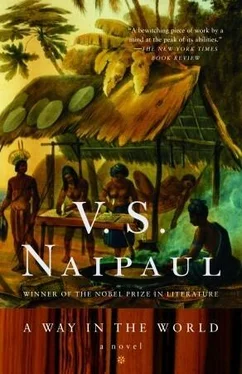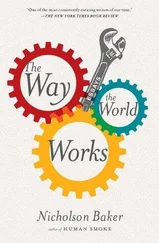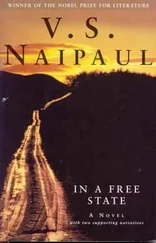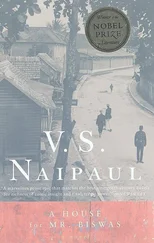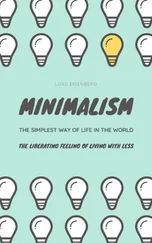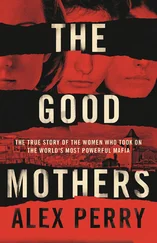2. History: A Smell of Fish Glue
ON MY seventeenth birthday I became an acting second-class clerk in the Registrar-General’s Department. It was a filling-in job, between leaving school and going away to England, to the university; and it was one of the most hopeful times in my life. The Registrar-General’s Department was in the Red House, in St. Vincent Street. This was one of the first streets I had got to know in Port of Spain.
I was a country boy, and still am in my heart of hearts. Only a country boy could have loved the town as I did when I came to it. This was in 1938 or 1939. I loved everything about the town that was not like the country. I liked the paved cambered streets and even the open kerbside gutters: every morning, after they had done their sweeping and gathering, the street-cleaners opened the water hydrants and flooded the gutters with fresh, clear water. I liked the pavements. Many of the houses had decorative fences of a particular style, with a big carriage or cart-gate at the side, usually of corrugated iron, and an elegant small gate in the middle, leading to the front door. These front gates were of stiff patterned wire within a tubular frame and with a metal arabesque at the top. Sometimes they had a bell. I liked the way the pavements dipped outside the big side gates (to let in the carts or cars to the yards, though very few people had cars). I liked the street lamps; the squares with their trees and paved paths and benches; the routine of the town day, from the street-cleaners’ brooms in the early morning, to the newspaper being thrown onto the front steps, to the horse-drawn ice-cart in the middle of the morning. Port of Spain was small, really, with less than a hundred thousand people. But to me it was a big town, and quite complete.
My father was my guide to the city in the very early days. One Sunday afternoon he took me to the city centre and walked me down two or three of the principal streets. Sunday was such a quiet day that you could — for the sake of doing something unusual — get off the pavement and walk in the street itself. Frederick Street was the street of the big stores. More interesting to me was St. Vincent Street. At the lower end, near the harbour, it was the street of the newspapers, the Trinidad Guardian and the Port of Spain Gazette, facing one another. My father worked for the Guardian. It was the more important and more modern paper. From the pavement you could see the new machines, the big rollers, the big unwinding ribbons of newsprint, and you could get the warm smell of machines and paper and printing ink. So, almost as soon as I had come to the city, this new excitement, of paper and ink and urgent printing, was given to me.
Later I got to know the higher or upper parts of the street. The tailor who made trousers for me had his shop in St. Vincent Street. My father took me there one day. The tailor’s name was Nazaralli Baksh. His shop faced west and was shaded from the afternoon sun by a white canvas blind hanging vertically over the pavement. His name was painted on this blind. He was a small, slender Indian man, standing some way inside his shop, perhaps because of the sun. He had a fined-down face, with dark shining eyes set in darker sockets, and with his thin hair brushed back flat: a severe man, friendly to my father, but more matter of fact with me than I expected adults to be. I expected adults who had been properly introduced to me to be a little awed by me, and my “brightness.” The thin tape measure hanging round Nazaralli Baksh’s neck was like part of the severity of his appearance.
I don’t know how good his tailoring was; but this introduction made him the man I thought of as “the tailor.” I thought of no one else as a tailor in quite this way; every other tailor in Port of Spain seemed to me counterfeit. I understood at some stage that he was a Mohammedan. This didn’t at first make him less close; but then, with Indian independence, and the religious partition of the sub-continent, the idea of difference began to attach to him, though I never stopped going to him for my clothes. It was Nazaralli Baksh who made the clothes I took with me when I went away to England.
I heard later that a lot of his work was for the local police force; he made uniforms for them. For us who were his fellow Indians this would have been part of Nazaralli Baksh’s legend and success. Police Headquarters was just across the road from his shop. It was an important Port of Spain building. It was distinctive, with a high grey wall of stone and rubble. Later knowledge told me that it was a British colonial building in the Victorian Gothic style. At the time that rough grey front wall and those pointed reddish arches in the open galleries at the back seemed to be just what you would expect to find in Police Headquarters.
A small town, a small street; but it took time to know. I had no interest in the law or lawyers, for instance, and for many years I paid no attention to that part of the street, opposite the courts, where the lawyers were. Then one day I went to the “chambers”—quaint word — of a famous black lawyer.
This happened quite late, shortly after I had left school. I had been successful at school; it was known — people took an interest in these things — that I had won a scholarship and was going to go abroad soon. The lawyer’s son had been right through school with me, and one day he said he wanted to take me to meet his father. We went to his father’s chambers. These chambers were in St. Vincent Street and occupied the whole of a very small house, a real Port of Spain miniature from the Spanish time. It would have been one of the earliest residential houses, built perhaps in the 1780s, not long after the city had been laid out. I suppose a number of these early houses were as small and squashed as they were because only short stretches of the streets had been made up; bush and plantations would have been quite close.
The little front room of the chambers was full of black people, ordinary people, sitting very close together on two benches, bench facing bench across bare floorboards. The slats of the jalousies of the little front window were coated with dust from the street; you could see on the distempered walls where over the years the people on the benches had rested shoulders and heads. The people I saw were as silent and patient as people waiting for free medicine in a Health Office. Bright eyes, shining faces, reverential expressions: black people coming to one of their own, not minding the discomfort and the stillness and the wait, and not resenting the young boy who, just arrived, simply went into the inner room where the great man was. The atmosphere of the narrow little waiting room was new to me.
In the more open, cooler room at the back the lawyer was in shirtsleeves, with his lawyer’s jacket on a hanger. The lawbooks and old folders with old papers, the general scruffiness of the chambers, the worm-eaten boards of the partition, made the lawyer’s profession seem a very dull one: it was hard to imagine that anything done in this room could generate real money.
I didn’t know what to say to the lawyer, after the courtesies, which went on for a while. And he seemed equally at a loss; he seemed content just to look at me. I myself had a wish to look below the desk at the lawyer’s shoes. His son had told me, years and years before, when we were both in the fourth or fifth standard at the elementary school, that you could always tell a gentleman by the way he kept his shoes.
My friend didn’t help with the conversation. His manner had altered in the inner office. He had become very much the son, the family treasure, the person who didn’t have to try. He seemed now to be more interested in finding a cold drink. He was very casual with the great lawyer.
Читать дальше
